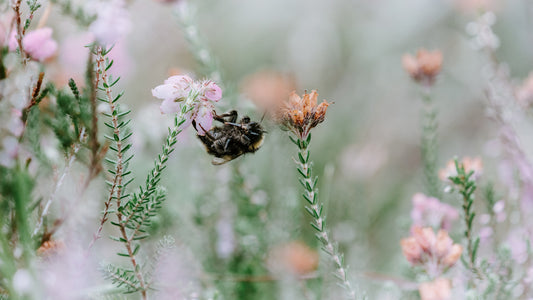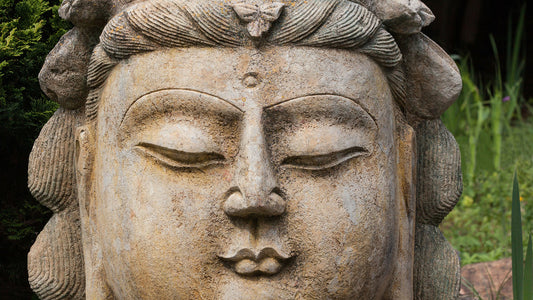
Set-Offers
Save when you buy a set
Shopping cart
Your shopping basket is empty
Yoga

Meditation
Yoga Sets

| Meditation
Pratyahara is the fifth aspect of Patanjali's eightfold path and means the discipline of the five senses. It follows Pranayama (4th level, mastery of the breath) and leads to Dharana (5th level, concentration) . A new world opens up to us through this “directing oneself inwards”.

Smell, see, hear, feel and taste: we use our senses to make contact with the outside world. When I first heard the meaning of pratyahara during my yoga teacher training, all I thought was, "Why would I want that - turn my senses inward? I want to discover the world, smell it, feel it, taste it...” Today I know the meaning of pratyahara.
Our senses are like badly brought up children. If we don't bring them to their senses, they will dominate us with endless demands. Pratyahara turns the whole thing around. Like a tortoise that retracts its limbs under its shell, reducing contact with the outside world.
Experience the inner world
Within us there is everything that is also outside: light, shadow, clarity, fog... this world opens up to us through pratyahara and the mind is trained to perceive subtleties that would otherwise remain hidden from the senses. We must not underestimate the role of sensory input. They make us what we are because they affect the subconscious. Strong sensory impressions cloud the mind. And a clouded mind prompts reckless action.
There are different interpretations of pratyahara in the yoga scriptures. In Patanjali's Yoga Sutra, pratyahara follows pranayama, mastery of the breath. By observing and regulating the breath, we collect our mind. This concentration is followed by pratyahara: withdrawing the senses from objects or things. Patanjali therefore describes pratyahara as a result and not as a voluntary activity on the part of the practitioner.
This view can also be found in other comments. As Vyasa, one of the earliest commentators on the Yoga Sutra, writes:
“When the queen bee flies up, the bees swarm after it, when the queen bee settles down, the bees settle down too. Even so, when the mind is controlled, the senses are controlled.”
The determination of the mind is therefore sufficient to direct the senses. Whichever direction our queen bee – our mind – flies, the senses follow.
One technique of pratyahara is to focus on the point between the eyebrows (ajna chakra, third eye). I'll tell you how to do that in the next article.

Time for more mindfulness! Today we will introduce you to a very special meditation technique for dealing with stress: Mindfulness Based Stress Red...
Continue reading
Today we will introduce you to an exciting meditation technique: the meditation on the third eye from yoga. Focusing on the area between the eyebro...
Continue reading
There are no comments yet. Be the first to leave a comment!